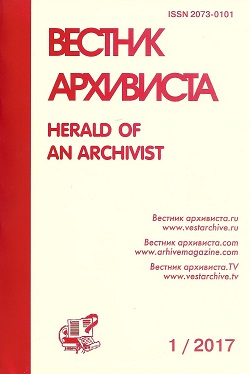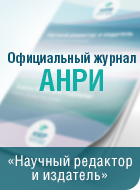Scientific article
УДК 930.85+008+658.382.2+930.25+651.5+314.1+314.8+316.4+316.4+331.101+331.108+332.142+338.28+331.46+331.43
doi 10.28995/2073-0101-2023-2-540-552
Gonina, Natalia V.
Institute of History of the Siberian Branch of the Russian Academy of Sciences, Novosibirsk, Russian Federation
Role of the Norilsk Nickel Smelter in Formation of Norilsk Urban Environment in 1950–70s
Abstract
Existence of the cities above the Arctic Circle is a topic that is gaining importance. Most scholars adhere to economic approach, some to urbanistic, and rarely to social. However, it is the sociocultural situation that distinguishes a city from a settlement near a plant, the quality of the urban environment playing a decisive role in preservation (or loss) of population. Urban environment is a multidimensional notion. This paper aims to correlate the elements of the urban environment of Norilsk created with direct involvement of the Norilsk Nickel Smelter with those evolved entirely without its intervention. The paper demonstrates that absolutization of departmentalism in city life can camouflage essential features of the urban environment, while the widely used notion of “single-industry town” (monogorod) contradicts the very essence of the city. The work is based on archival materials and memoirs of the Norilsk citizens, some are being introduced into scientific use. The authors employed “new urban history” approach, in particular, works of Henri Lefebvre. The paper analyses the sources and specific character of urban population growth, investigates the driving forces of Norilsk development and improvement. The paper also shows constructive and destructive influence of the smelter upon the urban environment. The paper explores the ways in which residents contributed to city development. Additionally, it considers natural and climatic factors. The authors conclude that it is wrong to overemphasize the activities of the Norilsk Nickel Smelter in creation of Norilsk and to contrapose city and plant. Though there are clear physical boundaries for both town and plant, their social and cultural spheres are interconnected. The development of plant and town are like two sides of a coin. Those who inhabited the town and those who worked for the smelter or managed it were with few exceptions the same people. The plant organized and financed city construction and development, but realization was in the hands of its citizens. Even if the initiative belonged to the plant administration, side issues of municipal improvement were settled by dint of citizens’ activities. The geographical position of Norilsk influenced its specific lifestyle. It was impossible to cope individually with existential threats of living beyond the Arctic Circle. In this respect, the smelter paternalism was natural. Simultaneously, the difficulties of everyday life united people and formed collective spirit that remained even when people left the town. The same hardships promoted construction of health and wellbeing resources, contributing to urban development, organized and sponsored by the smelter. Altogether, the paper argues that the development of the smelter and the town was interrelated. It became a crucial factor for survival in extreme environments.
Keywords
Historical sources, Norilsk, smelter, urban environment, Arctic, departmentalism, construction activity, municipal improvement
Download the article: gonina_doi
References
AGAPOV, M. G. “Zdes' vse neftyaniki”: diskursivno-simvolicheskoe proizvodstvo i osparivanie neravenstva v severnom monogorode [“We Are All Oil Workers Here”: Discursive-Symbolic Production and Challenging Inequality in the Northern Monotown. In Russ.]. IN: Antropologicheskii forum, 2021, no. 48, pp. 144–178.
ZAMYATINA, N. Yu., PILYASOV, A. N. Rossiya, kotoruyu my obreli: issleduya prostranstvo na mikrourovne [Russia that we found: Exploring space at the micro level. In Russ.]. Мoscow, Novyi khronograf publ., 2013, 548 p.
KUTSEV, G. F. Chelovek na Severe [Man in the North. In Russ.]. Мoscow, Politizdat publ., 1989, 217 p.
STAS', I. N. Surgut: obrazy i prostranstva “neftyanogo goroda” [Surgut: Images and spaces of the “oil city.” In Russ.]. IN: Zhurnal “Kul'turnaya i gumanitarnaya geografiya,” 2013, vol. 2, no. 1, pp. 18–27.
TIMOSHENKO, A. I. Adaptatsiya naseleniya v novykh gorodakh Sibiri v 1950–1980-e gg. [Adaptation of the population in the new cities of Siberia in the 1950s–80s. In Russ.]. IN: Formirovanie i adaptatsiya naseleniya v raionakh industrial'nogo osvoeniya Sibiri [Formation and adaptation of the population in the regions of industrial development of Siberia. In Russ.]. Issue 2. Novosibirsk, Parallel' publ., 2007, pp. 150–169.
KOSTOUROU, F. Mass factory housing: Design and social reform. IN: Design Issues, 2019, vol., 35, no. 4, pp. 79–92.
VARINI, V. Building an industrial society: welfare capitalism in the “city of factories,” Sesto San Giovanni, Italy. IN: European Review of History: Revue europ?enne d'histoire, 2016, vol. 23, no. 4, pp. 724–750.
About the authors
Gonina Natalya Vladimirovna, PhD in History, associate professor, Institute of History of the Siberian Branch of the Russian Academy of Sciences, sector of agrarian and demographic history, senior researcher, Novosibirsk, Russian Federation, +7-383-330-24-31, +7-913-983-07-79, This e-mail address is being protected from spambots. You need JavaScript enabled to view it
ORCID 0000-0002-6229-4767
Grant information
The article was written on the topic of the state task "The dynamics of the economic and social development of Asian Russia in the context of geostrategic challenges of the late 19th - early 21st centuries." (FWZM-2021-0003)
Submitted 28.10.2022, published (for citation):
GONINA, N. V. Rol' gorno-metallurgicheskogo kombinata v formirovanii gorodskoi sredy Noril'ska v 1950-1970-e gg. [Role of the Norilsk Nickel Smelter in Formation of Norilsk Urban Environment in 1950–70s. In Russ.]. IN: Vestnik arhivista / Herald of an Archivist, 2023, no. 2, pp. 540-552. doi 10.28995/2073-0101-2023-2-540-552














